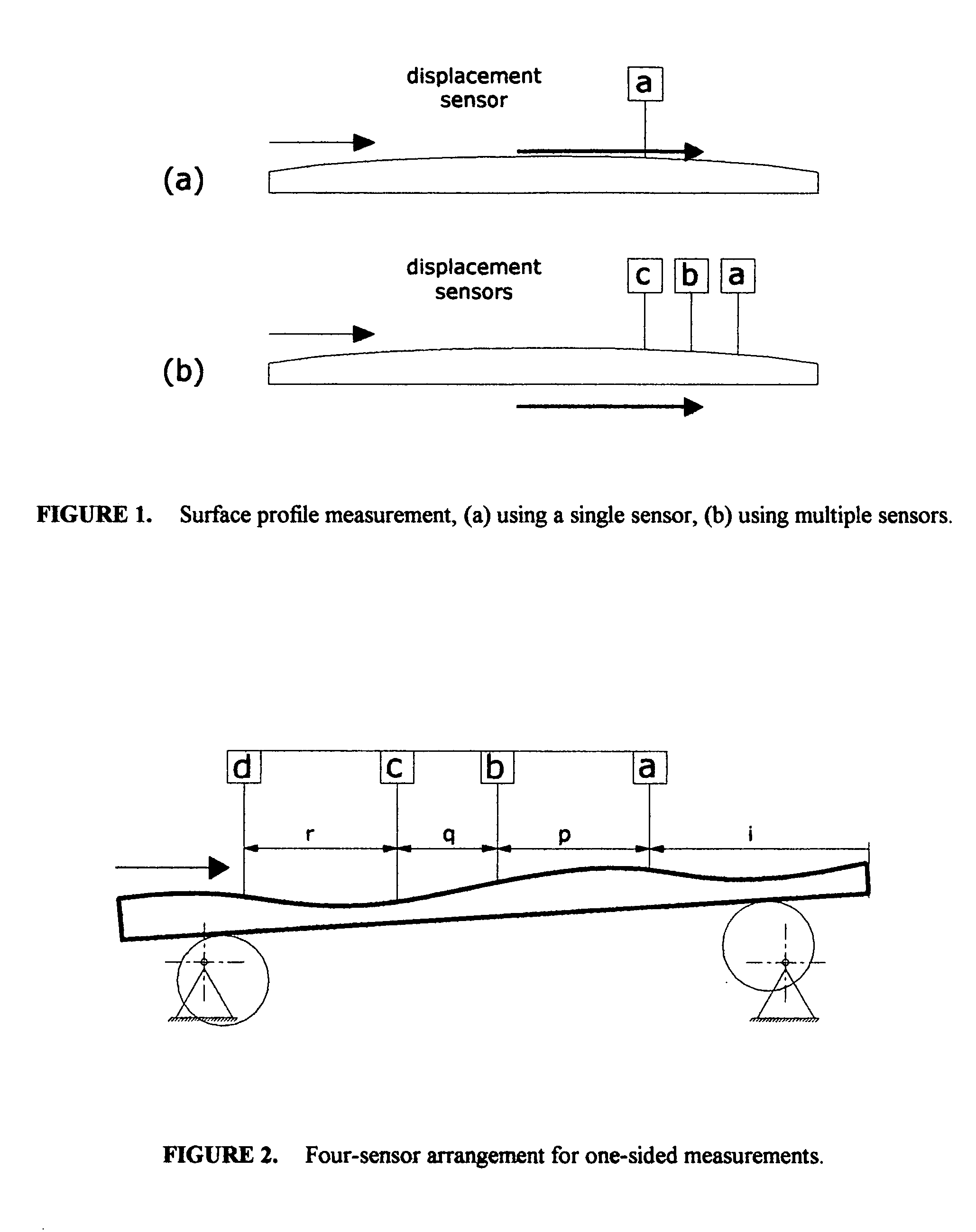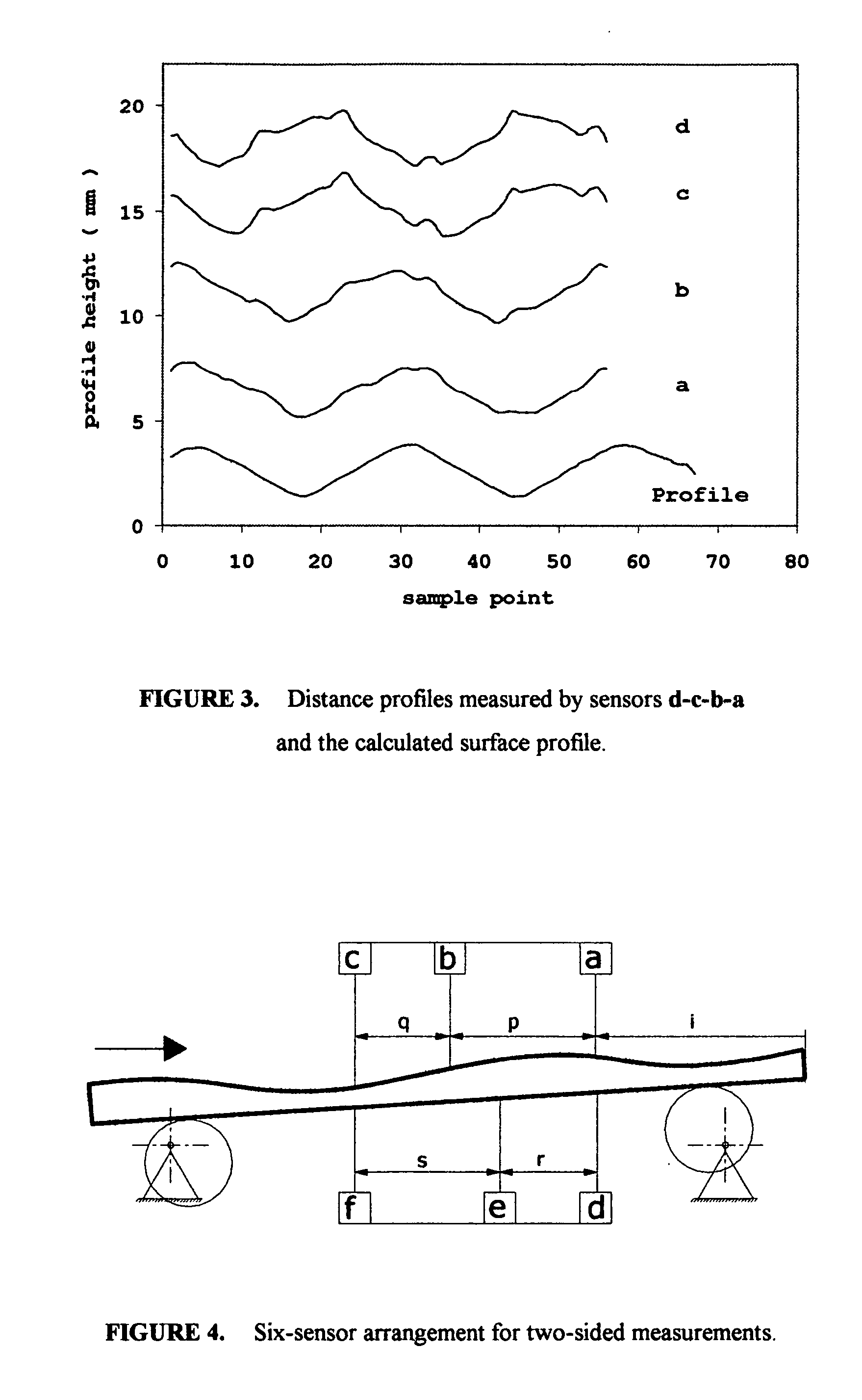Surface profile measurement, independent of relative motions
a technology of relative motion and surface profile, applied in the direction of measuring devices, instruments, using mechanical means, etc., can solve the problems of inability to provide a separate inability to accurately measure the displacement of the relative direction, and inability to provide a linear slide for moving the sensor. , to achieve the effect of easy adaptation and enhanced measurement accuracy
- Summary
- Abstract
- Description
- Claims
- Application Information
AI Technical Summary
Benefits of technology
Problems solved by technology
Method used
Image
Examples
Embodiment Construction
[0018] To simplify the description, it is supposed that the distance sensors remain stationary and that the measured object moves. However, it is apparent that the description also applies to the case of a stationary object and moving sensors.
[0019]FIG. 2 schematically shows an example sensor arrangement. In this case, there are four distance sensors arranged in a row. However, the invention is not limited to this specific arrangement. Other arrangements with fewer or more sensors in one or more rows, on the same or opposite sides of the measured object, are also useful. The distance sensors can be of any suitable type, chosen according to the needs of the particular application. Example sensor types include, but are not limited to, laser triangulation, ultrasound, eddy current, LVDT sensors, etc. For notational convenience, the sensors are labeled a, b, c and d, in the reverse sequential order that they are reached by the moving object.
[0020]FIG. 2 schematically shows a simple ro...
PUM
 Login to View More
Login to View More Abstract
Description
Claims
Application Information
 Login to View More
Login to View More - R&D
- Intellectual Property
- Life Sciences
- Materials
- Tech Scout
- Unparalleled Data Quality
- Higher Quality Content
- 60% Fewer Hallucinations
Browse by: Latest US Patents, China's latest patents, Technical Efficacy Thesaurus, Application Domain, Technology Topic, Popular Technical Reports.
© 2025 PatSnap. All rights reserved.Legal|Privacy policy|Modern Slavery Act Transparency Statement|Sitemap|About US| Contact US: help@patsnap.com



